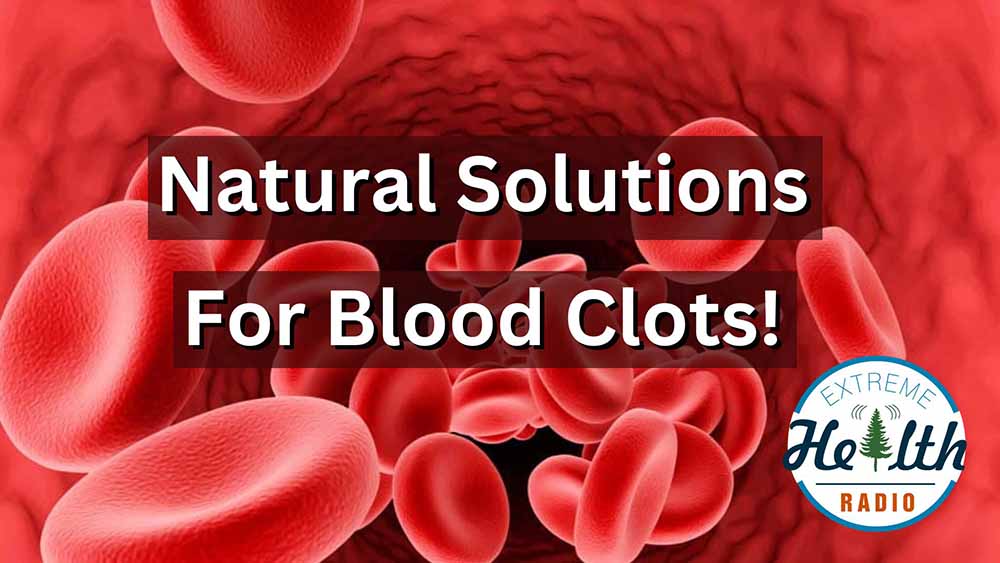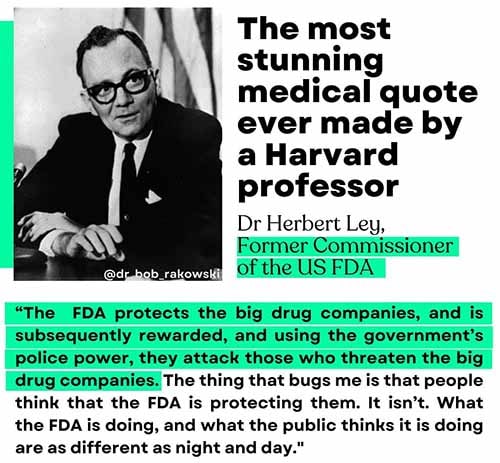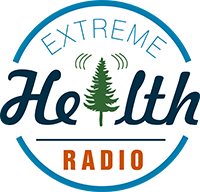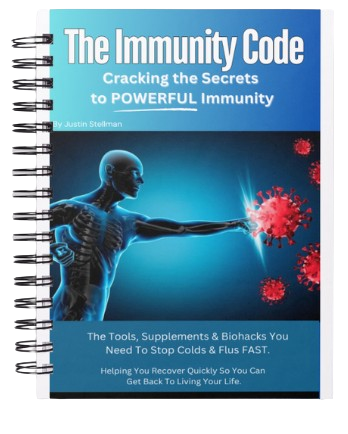
The question this article is going to attempt to answer is, how do you dissolve blood clots naturally?
Here she goes…
If you think you have blood clots and were put on medications, it’s very important to read this article in its entirety. This information about blood clots should have been given to you by your doctor.
But he didn’t share it with you because medications are more profitable than natural cures.
They’re not interested in curing you because that would be bad for business. They’re more interested in keeping their medical license and earning money than curing you.
They’re only giving you half the story because they were never taught about natural remedies or what causes blood clots. If they were taught true information, and we lived in a free country, we would have been told the entire story and as adults we could make an informed decision.

So with that out of the way…
I want to share with you research about how you can dissolve blood clots naturally, if you have them. And I want to show you how to live in a way that will prevent your blood from clotting again.
In order to prevent blood from clotting we need to look at the health and structure of…
- The blood itself
- Its thickness or viscosity
- The strength and flexibility of veins, blood vessels and arteries
The blood itself should be healthy, oxygen rich, full of nutrients while also being absent of toxins, chemicals, heavy metals, parasites and any other pathogens. In other words having healthy oxygen rich blood is going to help prevent blood from clotting
The other factor with blood is, how much is there? If you have too much blood, it’s going to become too thick or viscous which means it will not be able to get through the capillaries and veins which will put pressure on those structures. Too much pressure and they’ll burst causing an embolism. In other words, excess overall blood volume is going to be negatively associated with clotting.
The last piece to be aware of when it comes to blood clots is the strength and flexibility of veins, capillaries, blood vessels and arteries. As I mentioned before, if there is too much blood volume, these structures could burst. But if these structures are malleable and flexible (like they were when you were a child), they can expand and contract (like a water balloon) as needed. The ideal situation is to have arteries, and veins that are flexible but also not have too much blood volume.
When these structures become calcified (think of cement pipe that is rigid and stiff) they cannot bend or expand as needed. Any excess pressure or volume will cause them to rupture and that’s when you get an embolism or clot that can move and get stuck elsewhere.
What Causes Blood To Clot?
There’s a really great book called The Blood Thinner Cure and in it the author Dr. Kenneth Kensey talks about the thickness of blood increasing the chances of blood to clot. I’ll get more into this later.
Some other things that can cause blood to clot are physical injuries are platelet aggregation which refers to the “stickiness” of these cells to clump or stick together.
Something else to consider is something called fibrinolysis. This is how your body breaks down fibrin clots using an enzyme called plasmin. If this process slows down or becomes less effective, fibrin can start to build up in your blood vessels. Over time, this buildup might increase the risk of a thrombotic event, like a dangerous blood clot.
Plasmin starts out in an inactive form called plasminogen, which is made in the liver. It gets activated and turned into plasmin by molecules like tissue plasminogen activator (t-PA), urokinase, or similar substances.
Since plasmin is made in the liver, you want to make sure your liver is working properly (since it has over 500 biological functions). Some ways to support your liver would be taking milk thistle, dandelion, doing coffee enemas, castor oil packs and even rectal ozone insufflations.
Blood Clotting Foods To Avoid
Basically one of the main reasons your blood is unhealthy and clotting is because you’re following a diet that’s full of processed foods and seed oils which is causing liver damage to the extent that it no longer can produce plasmin and other enzyme necessary to break down potential clots.
Here’s a list of food items I would avoid if I were dealing with blood clots..
- Excess sodium from salt (swap it out with potassium based salt)
- Processed carbohydrates that spike insulin
- Vegetable oils, seed oils and all polyunsaturated fatty acids (PUFAs) – If you must consume them, at least take Vitamin E.
- Alcohol
- Caffeine
Dangers of Blood Thinning Medications
When people get put on blood thinning medications, I cringe because there are so many better options. I hate to see this especially if the patient is not given true informed consent. I’m going to share the effects of the top 3 blood thinning medications.

Warfarin (Coumadin)
Generally warfarin is used for blood clots that could form with conditions like atrial fibrillation, deep vein thrombosis (DVT) and pulmonary embolisms (blood clot in the lungs). Not only can it cause severe bleeding in the gastrointestinal tract (as if that wasn’t bad enough) but also something called warfarin necrosis which is deadly and caused from small blood clots in the blood vessels.
No thanks.
Apixaban (Eliquis) and Rivaroxaban (Xarelto)
This medication is used for the same conditions as warfarin but also to prevent strokes. This one can cause internal bleeding but has the added benefit of life-threatening brain or gastrointestinal bleeding.
How exciting.
And if you get off this medication quickly, you can look forward to “rebound clotting” which is the body’s reaction to removing this medication from your system.
Heparin and Low-Molecular-Weight Heparins (e.g., Enoxaparin)
This medication is normally used in hospitals for acute blood clots that can happen during or after a surgery. On top of severe bleeding in the brain or stomach you can also look forward to what’s called Heparin-Induced Thrombocytopenia (HIT) which is a rare but severe immune reaction causing low platelet counts and potentially life-threatening blood clots.
And if you’re on this medication for a long time, look forward to weaker bones and potentially being diagnosed with osteopenia or osteoporosis.
That’s gotta feel good.
3 Blood Thinning Supplements
What really bothers me is doctors don’t tell you about the real dangers of blood thinning medications AND they make no mention of viable natural alternatives that work better with no side effects. Not only are these natural remedies not brought up in conversation, but when doctors are asked about them, they say there’s not clinical studies showing they’re effective.
Since medical doctors don’t stay up to date on research, they lie and tell you there are no studies.
Make sure to look your doctor in the eye when asking and study his or her face and reaction when responding. You’ll know right away if they keep up with research. If they answer that there are no natural remedies that work in a very confident way, you know they’re lying.
They’re acting confident so that you’ll take them at their word and not question them. They don’t want you to ask questions. In order for you to not ask questions, they must answer in an authoritative way.
In reality they’re scared because they know, that you do more research than they do.
Nattokinase
Nattokinase is the first and most important supplement to take if you have blood clots. It is a substance that was first derived from a fermented soy product called natto. It tastes absolutely horrible and stinks to hell and back also. If you can stomach it, food is always best but for this, I just go for the supplements. When it was discovered researchers found that those who consumed this fermented foods had less blood clots.
The trick with nattokinase for blood clots is that you have to take it away from food every 4 to 6 hours. I take it before bed and right when I wake up. Taking it during the day is a little more tricky but you do the best you can. Also it may take 6 to 8 months (depending the dose you’re taking) for clots to be completely dissolved.
It is powerful but you have to be consistent.
Here are some interesting studies you should look at…
Comparative Cardioprotective Effectiveness: NOACs vs. Nattokinase—Bridging Basic Research to Clinical Findings
A 2024 study titled “Comparative Cardioprotective Effectiveness: NOACs vs. Nattokinase—Bridging Basic Research to Clinical Findings” from Biomolecules assessed nattokinase’s effect on blood clots over a study duration of several weeks with a focus on cardiovascular health. It found that nattokinase effectively thinned blood and dissolved clots, improving circulation. The conclusion was that nattokinase is a promising alternative to traditional anticoagulants. – Source
Intravenous injection of nattokinase-heparin electrostatic complex improves the therapeutic effect of advanced tumors by dissolving cancer-related thrombosis
Another 2024 study, “Intravenous injection of nattokinase-heparin electrostatic complex improves the therapeutic effect of advanced tumors by dissolving cancer-related thrombosis”, published in Life Sciences, explored nattokinase’s thrombolytic potential in cancer patients over a few months with notable clot dissolution. Results showed a significant improvement in thrombosis management. The study concluded that nattokinase could be a potent adjunct for advanced thrombosis treatments. – Source
Health-promoting effects of postbiotic Bacillus subtilis subsp. natto
The 2024 research “Health-promoting effects of postbiotic Bacillus subtilis subsp. natto” from the Chinese Journal of Medicine investigated nattokinase from fermented natto in human trials lasting months. The study demonstrated its efficacy in dissolving clots and lowering blood pressure. It concluded that nattokinase has a significant potential for improving circulatory health naturally. – Source
Fish Oil
I’m generally not a fan of fish oil because they have multiple weak double hydrogen bonds that when oxidized become rancid once inside a body filled with light, heat and oxygen. It doesn’t matter how pure they are or how they’re nitrogen flushed and not oxidized. Once they get into your tropical body, they lose their hydrogen bonds and quickly rancidify.
With that said, I’m not saying they don’t have a biological effect on the body. Dr. Ray Peat once mentioned that fish oils should be taken no longer than 60 days in a row. And when you do take it, always take Vitamin E (one of the few fat soluble antioxidants) with it to mitigate the oxidative damage caused by ingesting rancid oils.
Even though fish oil is not ideal, it’s better than taking any medication so if I were forced I would take fish oil for blood clots along with Vitamin E.
The way fish oil works is that it prevents the platelets from sticking together improving viscosity. You want to make sure you don’t overdue fish oil though because you could cause your blood to become TOO thin and if you get cut, your blood will not clot and heal.
I would work with a doctor just to get your levels checked as your taking fish oil.
Men should find a fraction that has higher DHA levels, while the evidence says women respond better to the EPA fraction of the molecule.
Functional Foods in Preventing Human Blood Platelet Hyperactivity-Mediated Diseases
The 2024 study “Functional Foods in Preventing Human Blood Platelet Hyperactivity-Mediated Diseases” examined the effects of 10 grams of fish oil daily on 18 healthy adults over several weeks. Results showed a significant reduction in platelet aggregation, demonstrating fish oil’s potential to reduce clot formation. The study concluded that fish oil effectively lowers platelet hyperactivity. – Source
Functional Foods in Preventing Human Blood Platelet Hyperactivity-Mediated Diseases
Another 2024 review published in Nutrients, “Functional Foods in Preventing Human Blood Platelet Hyperactivity-Mediated Diseases”, analyzed human trials and reported that fish oil supplementation reduced platelet aggregation markers. Over a few weeks, fish oil showed consistent benefits in reducing platelet stickiness in human participants. The study concluded that fish oil plays a preventive role in thrombotic diseases. – Source
Assessment of the State of the Endothelium in Cerebral Ischemia and the Introduction of Polyunsaturated Fatty Acids
A study titled “Assessment of the State of the Endothelium in Cerebral Ischemia and the Introduction of Polyunsaturated Fatty Acids” in Clinical Trials and Case Studies (2024) administered Omega-3 PUFAs from fish oil to participants with cerebral ischemia for six weeks. Platelet aggregation decreased by 66%, along with a reduced aggregation rate of 41%. The research concluded that fish oil significantly improves endothelial health by reducing platelet adhesion. – Source
Garlic
Garlic is a proven remedy for thinning the blood and preventing blood clots. It’s been used for thousands of years whereas drugs from doctors are only a hundred years old.
Let’s look at some studies…
Effect of garlic (Allium sativum) on blood lipids, blood sugar, fibrinogen, and fibrinolytic activity in patients with coronary artery disease
The 1998 study “Effect of garlic (Allium sativum) on blood lipids, blood sugar, fibrinogen, and fibrinolytic activity in patients with coronary artery disease”, published in Prostaglandins, Leukotrienes and Essential Fatty Acids, investigated garlic’s impact on blood thinning over several weeks in patients with coronary artery disease. Garlic oil was found to enhance fibrinolytic activity, reducing the likelihood of clot formation. Researchers concluded that garlic improves cardiovascular health by acting as a natural blood thinner. – Source
Inhibition of whole blood platelet-aggregation by compounds in garlic clove extracts and commercial garlic products
A 1992 study “Inhibition of whole blood platelet-aggregation by compounds in garlic clove extracts and commercial garlic products”, published in Thrombosis Research, tested garlic’s effects on platelet aggregation in healthy volunteers over a few weeks. It demonstrated that compounds in garlic significantly reduced platelet aggregation at specific doses. The study concluded that garlic has potential anti-thrombotic benefits. – Source
Potential of garlic (Allium sativum) in lowering high blood pressure: mechanisms of action and clinical relevance
The 2014 meta-analysis “Potential of garlic (Allium sativum) in lowering high blood pressure: mechanisms of action and clinical relevance”, published in Integrated Blood Pressure Control, reviewed data from 20 trials including several assessing garlic’s blood-thinning properties. Garlic reduced platelet aggregation and supported lower blood pressure in hypertensive patients. The authors concluded garlic has significant cardiovascular benefits, including preventing clot-related complications. – Source
Blood Vessel Strength
Hawthorn Berry
Hawthorn in many studies has been shown to strengthen connective tissues. This means the strength of your veins, arteries and blood vessels will be able to be mailable and pliable so that they can contract and expand with your blood volume.
Standardized extracts from hawthorn leaves and flowers in the treatment of cardiovascular disorders—preclinical and clinical studies
A 2011 study “Standardized extracts from hawthorn leaves and flowers in the treatment of cardiovascular disorders—preclinical and clinical studies”, published in Planta Medica, examined hawthorn extract’s effects on human myocardial tissue. The extract was shown to improve tissue contractility and resilience, suggesting a strengthening effect on heart tissues. Researchers concluded that hawthorn extract supports tissue integrity and function in cardiovascular health. – Source
Testosterone
What are blood vessels, veins and arteries made of? They’re made of collagen, protein (amino acids) just like muscle. As such they’re controlled by hormones, namely testosterone. If you bruise easily or if your blood vessels break, they can cause clots, strokes and pulmonary embolisms if they go to the lungs.
Making sure your testosterone levels are high will help to keep the connective tissue in your body strong, including veins, arteries and blood vessels.
Other Considerations
Blood donations
Another way to thin the blood is to do regular blood donation. Doing so can also prevent heart attacks by as much as 88%. If you’re concerned about blood clotting, I would talk with your doctor about donating blood on a regular basis.
This not only helps to reduce iron stores but also prevents blood from becoming too thick.
“2,862 men ages 42 to 60 were observed for an average of nine years. Only one man out of 153 (0.7%) who had donated blood had an acute myocardial infarction (“heart attack”) from 1984 to 1995, as compared with 316 of 2,529 men (12.5%) who hadn’t donated blood. After all the usual “research adjustments”—age and all other predictive coronary risk factors—the blood-donating men had 88% less risk of acute myocardial infarction as compared with non-blood-donating men. (For the technically inclined, the difference between 0.7% and 12.5% had a p<0.0001. For the non-technically inclined, that means it’s really, really significant!) The researchers wrote, “These findings suggest that frequent blood loss through voluntary blood donations may be associated with a reduced risk of acute myocardial infarction in middle-aged men.” – Source
Ultraviolet Blood Irradiation
An often overlooked aspect of blood clots, are infections in the blood. There are many studies showing that there is a strong connection between the two. I recommend regular therapies of ultraviolet light on the blood.
Most natural clinics will have a device that will do this to the blood. Essentially a certain amount of blood is extracted from your body and run through a device that exposes it to specific frequencies of UV light.
Infections and Thrombosis: Mechanisms and Clinical Implications
A 2023 study titled “Infections and Thrombosis: Mechanisms and Clinical Implications”, published in PubMed, explored the link between infections and blood clot formation in hospitalized patients. It found that infections significantly increased inflammation and platelet activation, leading to a higher risk of venous thromboembolism. The study concluded that managing inflammation during infections is critical to preventing clot-related complications. – Source
Since the red blood cells are shaped like a 3 dimensional doughnuts it is able to hold on to these photons of light. When this “light bearing blood” is reintroduced into the body carrying these photons it oxidizes pathogens that cause infections.
If you’re concerned about blood clots, I would do a few of these sessions per year.
So how do you dissolve blood clots naturally? A good habit to get into is doing ultraviolet blood irradiation therapy. I’ll post a great show about this below that you might find interesting.
Sauna Therapy
As you probably know by now, I’m a huge fan of all the infrared sauna benefits. I use my sauna at least 4 times per week. By increasing core body temperature with FAR infrared light, can not only increase heat shock proteins but also clean the blood leading to less infections and less potential for blood to clot.
Check this study out…
Association between sauna bathing and fatal cardiovascular and all-cause mortality events
The 2015 study “Association between sauna bathing and fatal cardiovascular and all-cause mortality events”, published in JAMA Internal Medicine, examined the effects of regular sauna bathing on cardiovascular health in a cohort of 2,315 Finnish men over 20 years. It found that frequent sauna use improved blood circulation and reduced the risk of clot-related cardiovascular events, likely due to its effects on blood thinning through enhanced circulation and reduced vascular inflammation. The study concluded that sauna bathing is beneficial for cardiovascular health and may reduce the risk of blood clots. – Source
Hydration
Do you drink enough water? Years ago I read a book called Your Body’s Many Cries For Water and it really opened my eyes to just how important it is to stay hydrated. When you drink enough high quality filtered water that has had fulvic minerals reintroduced, you heal your blood. Your blood then becomes less viscous and thick.
Years ago I started drinking lots of water daily as a discipline. When I wake up, I drink a mason jar full of water 32 ounces with nattokinase on an empty stomach. Then I drink 2 more mason jars before dinner. I usually just take small sips on it throughout the day.
Check out this study…
Hydration and Disease
The 2007 study “Hydration and Disease”, published in the Journal of the American College of Nutrition, examined the role of hydration in maintaining blood fluidity and reducing clot risks. It demonstrated that consistent water intake decreases blood viscosity, promoting better circulation and lowering the likelihood of clot formation. The study concluded that staying hydrated is an essential and simple strategy for cardiovascular health. – Source
Testing
There are two tests that I would recommend getting from a natural doctor. They are, a platelet aggregometer test and or a blood viscosity test. You can find out more about these tests here.
Bottom Line
The bottom line is there there are therapies you can do at home (or at least not in a medical doctor’s office) that can help. One of them is regular sauna bathing and taking supplements. It does take time and patience but if you stick to a protocol you’ll be able to make big progress with dissolving blood clots naturally.
As always this is not medical advice, always check with your medical doctor before doing any of these natural treatments for blood clots. It pains me to say that because I don’t agree with it but for legal reasons I have to. 🙁
So…. how do you dissolve blood clots naturally?
I hope I’ve answered that question well in this article and I hope that it helps you!
Questions
- Have you been diagnosed with blood clots?
- How did you know you had them?
- What did you do to treat them?
- Did it work?
Comment below!


